In this second part of our look at the impact of climate change on North America’s rivers we will focus on the following major watersheds:
- the Mississippi-Missouri-Ohio-Tennessee-Arkansas-Red system, the most expansive river system on the North American continent.
- the American Southwest from the Rio Grande to the Colorado River.
- the Great Basin watershed
- the Pacific Coast from the Fraser River in BC to the Columbia and Sacramento-San Joaquin river system.
- the rivers of the Atlantic seaboard from the Maritimes to Florida.
The Mississippi Watershed – Over 3.2 million square kilometers (1.235 million square miles) in extent, this river system drains 15% of the North American landmass. Other than the Amazon in South America which is more than twice its size, there is no river watershed as big. But unlike the Amazon watershed which is dominated by the world’s largest continuous rainforest, the Mississippi system is heavily cultivated with more than 72 million inhabiting the area. It has been described as the “bread basket” of the United States. It is also the major transportation corridor for the interior of the country. To facilitate the latter the main river has been re-engineered as have many of its numerous tributaries for much of their length.
Unlike the Amazon which originates from glacier-fed sources and is subsequently fueled by the unique climate-generating capability of the rainforest, the Mississippi owes its water volume to annual precipitation across the North American continent. This makes the watershed particularly vulnerable to drought. And drought has been a dominant concern over much of the watershed in the last decade. So what are the forecasts for the watershed as rising greenhouse gases warm the atmosphere?
Climate change may not be kind to the watershed. Climatologists predict by 2050 increased evapo-transpiration as a consequence of rising temperatures. The climate models are showing precipitation level drops in the Lower Mississippi by an average of 12.7 centimeters (5 inches). When combined with evapo-transpiration almost equal to the drop in precipitation, the Lower Mississippi may experience a net loss of more than 25 centimeters (10 inches) in water availability annually. That will impact river levels, navigability, water quality and agriculture.
The climate models for the Upper Mississippi predict a moderate drop in precipitation but increased evapo-transpiration will result in a smaller amount of winter snowfall and longer periods of drought. For the upper part of the watershed the impact will be as significant as in the Lower Mississippi affecting navigability and freshwater availability.
That climate change case for the Missouri watershed is expected to be worse. The Missouri is the only Mississippi tributary whose source is alpine. One of its tributaries, the Milk River is glacier fed. But the main branch is not although it gets a lot of its source water from mountain snow packs. But through much of the river’s course it travels through pretty dry country that appears to be getting drier each decade. And climate models expect this pattern to continue as the atmosphere warms.
For the Red and Arkansas the scenario is even worse. Both of these watersheds today are experiencing severe cycles of drought with water levels reaching lows not seen since climate records were first kept. To sustain agricultural production at current levels under such conditions will require finding new sub-surface water sources or the bio-engineering of crops grown in the region to make them even more drought tolerant than the strains being developed today. Of course for the urban centers along these rivers access to freshwater and navigability will be compromised.
Rio Grande and Colorado Rivers – These two rivers originate in the mountains and central plateau of the Western Cordillera of North America. But they flow in different directions. The Rio Grande turns east emptying into the Gulf of Mexico. The Colorado turns west to empty into the Gulf of California. Both rivers flow through some of the driest landscapes in the continental United States. And both are heavily used by humans for agriculture, industry and freshwater consumption. Both rivers have watched significant urban growth in their watersheds. And both are more likely to experience significant problems as the atmosphere continues to heat up.
The Rio Grande (seen on the right in the map below) is home to more than 5 million. In its lower course it separates Mexico from Texas. Water levels today on the river are lower than they have been at any time in the last 50 years. That’s because since 2003 drought has dominated the watershed. Headwaters are at 83% of normal because rainfall in the state of Colorado, despite the recent report of extensive flooding, has remained below normal over that period of time. Dry spells have come to the Rio Grande throughout its history. Tree ring studies show five 10-year periods of drought even lower than today. But the data is worrisome suggesting greater uncertainty in rainfall for the remaining part of the 21st century. Best climate modeling suggests a dry future, something some climate scientists suspect has already arrived. Groundwater aquifers are already overtaxed for agriculture so farms will need to adapt to new crop types and smaller plantings to maximize value.
The Colorado River basin (on the left in the map below) is a source of water for seven U.S. states and provides for 40 million people. But the river is expected to see waterflow decrease between 6 and 20% by 2050. Compounding the decline in water volume is the rise in population of cities in the Southwest U.S. that take water from the river. Now add to this 15% of crop and 13% of livestock production in the U.S. dependent on water from the river. And finally consider the hydroelectric generating capacity of the river and the impact that lower water levels will have on structures like the Hoover Dam and Lake Mead and you have a crisis that is not easily solved.
The Great Basin Watershed – A feature of the Western Cordillera of North America, this watershed is landlocked and extends from the Sierra Nevada Mountains to Great Salt Lake and the Wasatch Mountain of Utah, and from Oregon to Nevada. It covers over 362,000 square kilometers (140,000 square miles). Its dry and warm climate has made it an attractive place for people to settle with cities like Las Vegas, Nevada, growing at a significant rate. But the Basin is semi-desert to desert at best, and one thing it lacks is a lot of freshwater. So any change to climate could have a disproportionate impact on the Basin.
Where does the freshwater in the Basin come from? The snow pack of the mountains that surround and are within it are the primary sources of water in the Basin. With temperatures expected to rise in the region by 1.6 to 2.8 Celsius (3 to 5 Fahrenheit) degrees by the end of the 21st century, snow pack melt will accelerate as will evapo-transpiration rates. This may well be offset by climate models that are indicating increased precipitation throughout the Basin and particularly in the northern sections. But also climate models are indicating more extreme weather events which may lead to the kinds of flooding events recently witnessed in Colorado.
Water is the critical issue of the Basin and human population growth, if it continues, will remain the greatest threat to the watershed’s viability.
Pacific Coast Watershed – The rivers of the Pacific coast of North America are dominated by a number of mountain chains that stretch 1,000 kilometers (over 600 miles) from west to east. This is far different from South America’s Andes Mountains which occupy a very narrow belt along the western spine of that continent. Characterizing North America’s Pacific coast are many rivers flowing through signficant mountainous terrain getting water from multiple glaciers and snow fields. Unlike the North American rivers we have already described, most of the Pacific watersheds contain rivers shorter in length with more significant descents than their eastern cousins.
In Alaska the largest watershed belongs to the Yukon River. British Columbia’s predominant watershed houses the Fraser River and its tributaries. The Fraser watershed is quite extensive, draining much of the interior of British Columbia. Directly south bordering on Oregon and Washington state but coming from sources in both Canada and the U.S. is the Columbia River. And finally in California we get to an extremely important watershed in terms of its economic impact on North America, the Sacramento-San Joaquin Rivers.
How are all of these watersheds impacted by projected changes to the climate as the 21st century unfolds? Alaska will see the largest temperature increases and, therefore, the most significant climate change. Permafrost melt will destabilize river beds. A warmer ocean off the Alaska coast may further alter precipitation patterns. The ecology most certainly will be altered with many species of fish, particularly salmon, compromised. In British Columbia and the Columbia River watershed, currently one of the wettest regions in North America, we are already seeing the impact of changing climate with cycles of drought impacting water volume, slope stability in the river valleys and of course the biological balance. Over the past 100 years precipitation has actually gone up slightly in these watersheds. Temperature increases will impact glacier-fed streams and likely we will see temporarily higher runoff levels followed by a permanent decline in river water volumes. Seasonal snow pack period length will shorten. Forecasters are seeing a trend to more extreme weather events and this has major implications for the population centers and agriculture practiced within these watersheds. For Vancouver in British Columbia, and Portland in Oregon climate change will have different consequences than those cities of the Pacific coast further south. But decreased river water volumes will impact drinking water supply, and electrical power generation capacity. And with warming temperatures we will certainly see an impact on public health with the spread of insect-borne diseases not currently native to the watersheds.
Further south the Sacramento-San Joaquin (see map below) may experience the most disruptive changes brought on by rising atmospheric temperatures. The recent record droughts in the Pacific Southwest extended to the Sierra Nevada Mountains, the most southerly range in the Western Cordillera north of Mexico. This drought has seen a decline of 60% in normal precipitation. That means a decline in glacier volume and snow pack, the primary sources of water for the Sacramento-San Joaquin watershed.
Any decline in water volume in this river system packs a punch much larger than the size of these rivers. That’s because these are the rivers of California’s Central Valley, known as the land of a “billion vegetables.” The Central Valley produces one-third of all produce grown in the United States. More than 230 crops grow in the valley. The State of California has been tracking temperature trends since 1895 and in its latest report show that extreme heat events are on the rise while winter chill time, an important factor for fruit tree germination is declining. The Sierra Nevada snow melt is declining and glaciers are retreating. In addition the Pacific Ocean off California has warmed 1 Celsius (1.8 Fahrenheit) degrees in the last century, twice the global rate. With the warming has come rising sea levels with salt water reaching further upstream into the watershed, contaminating the aquifer and soils of the Sacramento delta. And, of course, we have all witnessed the news about California wildfires which are becoming more frequent and severe as precipitation declines and temperatures rise.
The Atlantic Coast Watershed – Stretching from the rivers of Newfoundland and Labrador to Florida, this watershed is characterized by numerous rivers crossing a wide variety of landscapes and climate zones. In the northern extreme permafrost and snow and ice are the primary water sources for the rivers. In the mid-latitudes year-round precipitation and winter snow packs provide the water that feeds the lakes and rivers from Nova Scotia to Maryland. And in the more southerly areas of the watershed annual rainfall is the principle source of river volume. Throughout much of the watershed the predominant geographic feature in the west is a series of older mountain ranges stretching a distance of 2,400 kilometers (1,500 miles) from northeast to southwest. Mostly known as the Appalachians, these mountains are the primary water sources for the entire watershed with the exception of Florida.
The Appalachians serve as the eastern source waters for the Mississippi watershed and the Ohio and Tennessee River. On the eastern slopes the mountains give birth to rivers like the Hudson, Susquehanna, Delaware, Potomac, James, Chowan and Roanoke, Pamlico, Cape Fear, Pee Dee, Santee, Cooper, Ashley, Savannah, and Altamaha.
Climate models for the future of this watershed indicate increased precipitation, rising sea levels, polluted coastal aquifers from seawater penetration, and more frequent extreme weather events (but curiously not hurricanes). Most susceptible are the lowlands stretching from Maryland and Delaware in the north to South Carolina where mean sea level increases are expected to rise by 0.45 meters (approximately 1.5 feet) minimally. Why? Not just because of rising sea levels, but also because of another consequence of longer term climate change. With the melting of glacial ice mass going back to the last Ice Age, the continent has been experiencing what is called isostatic rebound. This is making the northern parts of North America tilt up and subsequently the southern parts tilt down. Chesapeake is subsiding as is much of the Atlantic lowlands from Delaware to Georgia.
With a human population of approximately 115 million (36% of the U.S. population), climate change here could have enormous consequences, far greater than anywhere else on the continent.
A note about Florida. This is the one state that may feel the greatest impact from climate change. Florida is already experiencing many challenges related to freshwater. But with rising sea levels, very large cities hugging both coastlines, and coastal aquiferd increasingly imperiled by seawater, the state needs to make major investments to ensure it will not become the first part of North America to experience mass migration as climate refugees flee.
A Postscript
A final note, for those of you who live south of the Rio Grande, I have confined my discussion to what is typically referred to as Anglo-North America. I do apologize and will try and study the impact that climate change will have on the watersheds of Mexico and Central America.
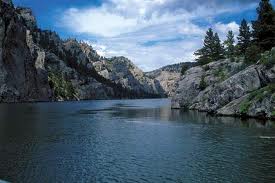
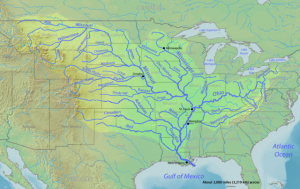
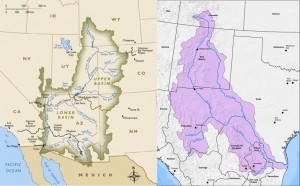
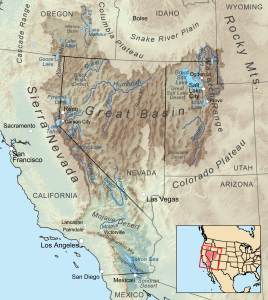
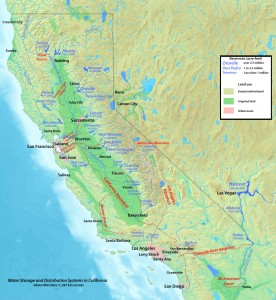
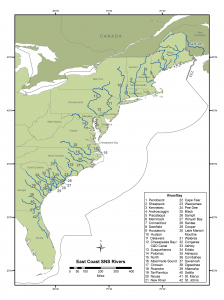









How can I take your science seriously if you can’t place St. Louis on a damn map? Fuck you can’t copy edit and you suck at geography. Why should I believe you can read a thermometer or a yardstick.